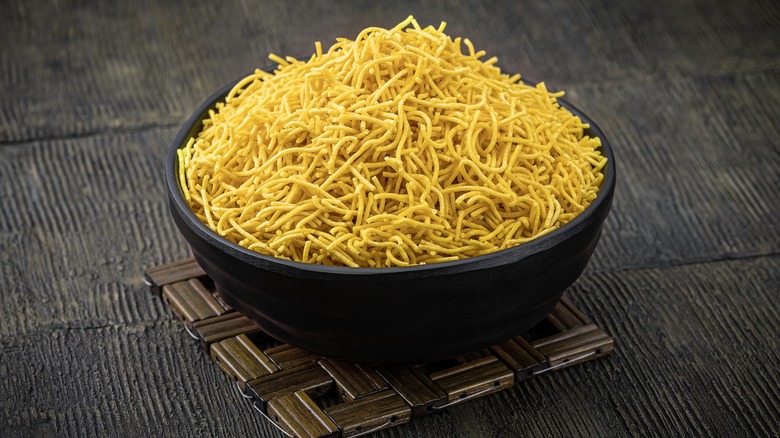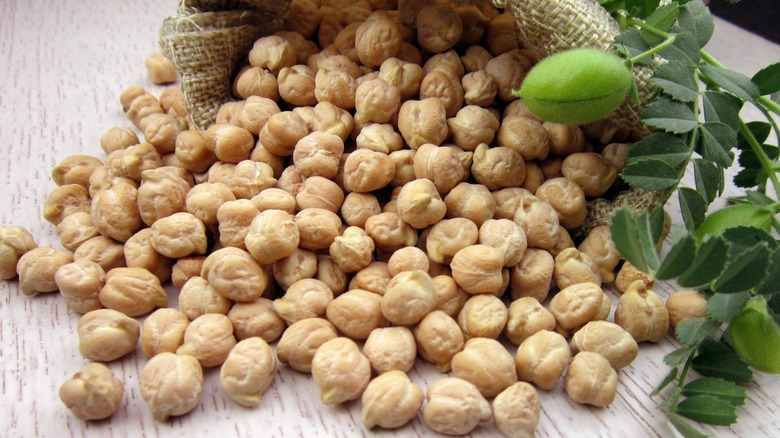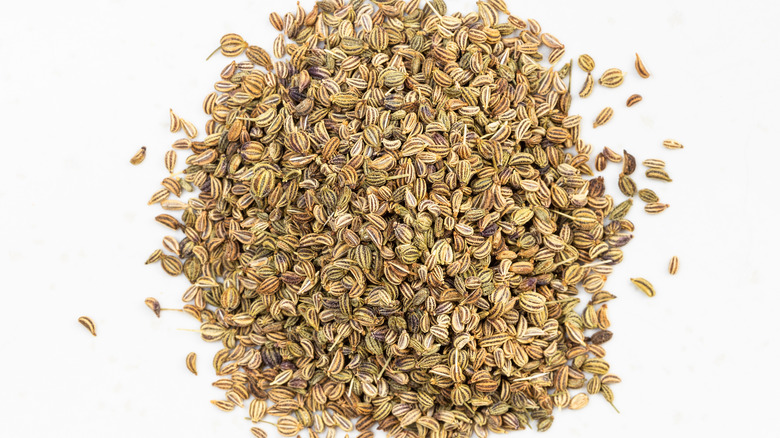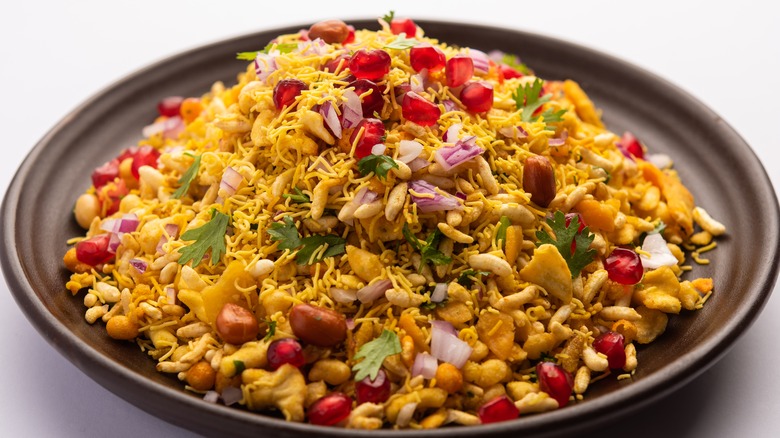Sev: The Irresistibly Crunchy Chickpea Noodle You Should Know
When it comes to snacks, we all have our preferences. Some of us love that salty and sweet combo, while others are addicted to anything with a crunch. Still, some snack enthusiasts crave something spicy. There's no shortage of tasty bites to fulfill these cravings, but a popular Indian treat can check off most of the items on a snacker's dream list. Crunchy, salty, spicy, and savory, as noted by Times of India. That snack is a popular noodle called sev.
While you may be familiar with crunchy noodles such as the fried chow mein type of noodles found in Asian cuisine, you may not have heard of sev, a chickpea noodle that originated in India. Sev is a crunchy, flavorful thin noodle that is great on its own or in a variety of Indian dishes. If you want to know more about this underrated gluten-free noodle, read on to learn all about sev, from where it originated to how it's made and how it's served.
A noodle with a distinct history
As detailed by YoHo Foods, around 200 years ago, the tribal community of Bhil came up with the idea of sev in the town Ratlam, located in India. There's a bit more to the noodle's story than that, and Business Standard dives into the complex history of the noodle, and the people who created it. In the late 19th century, Mughal rulers wanted a vermicelli-style noodle, also called seviyan, which is made from wheat.
However, there was just one problem, the Mughal's weren't able to buy or grow wheat in order to produce the noodles. Instead, the rulers tasked the people of the Ratlam area with the job of creating a noodle without wheat and instead making it using gram flour. Thankfully for us, the people were able to come up with a successful recipe, which resulted in what most come to know as sev noodles.
How it's made
As noted in Veg Recipes of India, sev is a fried, seasoned noodle made from gram flour. If you're unfamiliar with this type of flour, Olive Magazine defines gram flour as flour made from ground chickpeas. Not only does this mean that anything made with this flour is gluten-free, but since chickpeas are known to be full of fiber and protein, this makes gram flour a great alternative to traditional doughs made from wheat.
According to Taste Atlas, these crunchy noodles can vary in thickness, from spaghetti-like ribbons to thin strings. Along with the noodle's thickness, the seasoning can also vary, and it's not uncommon to find more flavorful types of sev seasoned with ajwain and turmeric. Ajwain, also known as carom seeds, is a spice that has numerous health benefits including having an anti-inflammatory effect and can even help to lower blood pressure, as detailed by Healthline.
How to serve sev
Besides the flavorful taste, golden appearance, and irresistible, crunchy texture, sev's popularity may also lie in its versatility. This crispy noodle is served alone as a snack that can be eaten by the handful, but there are also a few other ways to enjoy sev. As noted by Give Me Some Spice, sev is a mainstay component of Indian street food. The crunchy texture makes it great for topping dishes, such as ragda patties, a type of potato patty street food dish popular in Mumbai, as this Spice Up The Curry article details.
And according to Serious Eats, if you choose to make sev from scratch, the dough is also ideal as tempura batter replacement for vegetables. The diversity of the noodle along with the fact that it's a gluten-free alternative to crunchy snacks or noodles make it a dish that's worth testing out. The next time you're in the mood for something crunchy, try sev.



